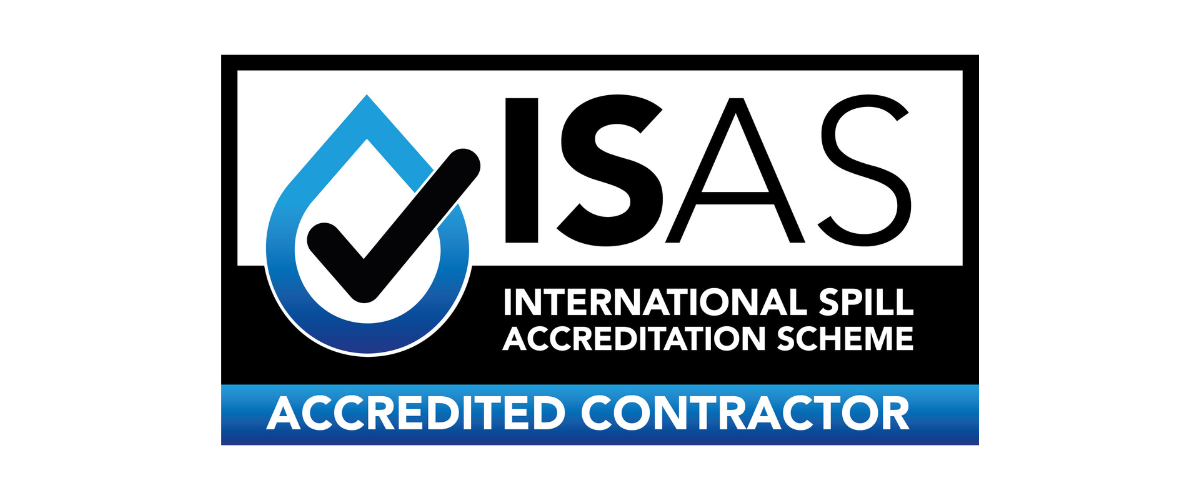GPT are experts in delivering robust, compliant oil & chemical bund design and construction projects, providing tailored secondary containment solutions that meet relevant regulations and standards, including CIRIA C736.
Secondary Containment Design & Construction
We provide expert bund design and construction services to ensure your containment systems are fully compliant with regulations, tailored to your specific operational needs, and offer robust environmental protection.
A bund is a secondary containment system which is designed to capture any leaks or spills from a primary containment vessel such as a storage tank. A bund consists of an impermeable floor and a set of impermeable walls to create a watertight area around a storage tank. Any liquid which escapes the primary containment is retained in the bund and prevented from spilling onto site or escaping to the environment.
The Control of Pollution (Oil Storage) Regulations make it a legal requirement in the UK to have adequate secondary containment on any external oil storage over 200 litres. Other sites e.g. COMAH sites may also have a legal obligation to ensure secondary containment is provided on hazardous liquid storage e.g. chemical tanks. However it is highly recommended to have secondary containment on all hazardous liquid storage, as their uncontrolled release may cause environmental damage and create a hazardous working environment. If you have a pollution incident you can be prosecuted, face an unlimited fine and be liable for all clean-up costs under the Polluter Pays principle.
Designing a bund that is both effective and compliant is a complex task that must address several technical, operational, and regulatory requirements. We design bunds to meet the standards set out in key guidance such as the Control of Pollution (Oil Storage) Regulations, CIRIA C736: Containment Systems for the Prevention of Pollution, and GPP 2: Above Ground Oil Storage Tanks.



Key Design Considerations
Capacity & Size
The industry standards for bund capacity are the 110% and 25% rules. The 110% rule is applicable where there is only 1 container stored inside the bund, in this situation the calculation is simple, the bund needs to have a capacity of at least 110% of the primary containment volume. For example if a tank has a capacity of 10,000 litres, the bund needs to have a capacity of 11,000 litres.
For bunds storing multiple containers, the required capacity is the greater of either 110% of the largest container or 25% of the total volume stored.
The additional 10% capacity accounts for factors such as rainwater, firefighting media, and potential overfilling. It also helps mitigate the risk of overtopping caused by dynamic liquid movement during a spill, where the contents may surge or create wave effects within the bund.
Structural Dimensions
Once the minimum capacity is determined, the bund’s size and shape must be carefully designed. While a compact footprint is often preferred to minimize space usage on site, other critical factors must also be considered. The dimensions should account for hydraulic forces during catastrophic events - such as spigot flow, where a high-pressure leak can cause liquid to jet over the bund wall before hitting the floor, or the tidal wave effect, where a sudden large-volume release can result in overtopping. Proper design ensures the bund remains effective under these extreme conditions.
Wall Height
While bund wall height is primarily determined by volume requirements, practical considerations must also be taken into account. Taller walls can increase capacity, help contain spigot flow, and mitigate the tidal wave effect caused by sudden tank failure. However, excessively high walls may restrict access, reduce ventilation, and hinder firefighting efforts. To balance safety and functionality, bund walls should ideally not exceed 1.5 metres in height.
Construction Materials
Bunds can be constructed using reinforced concrete or reinforced masonry; however, specific sites may have unique material requirements that must be followed. Prefabricated bund wall systems - secured to an impermeable base - are a practical alternative, offering faster installation, lower costs, and the flexibility to be dismantled and reassembled if needed. For more details on the bund construction materials we offer, please see the Drop-downs below.
All bunds must be engineered to withstand the forces associated with a catastrophic tank failure - >potentially up to six times the normal hydrostatic pressure. Once construction is complete, a hydrostatic test must be carried out to confirm the bund is fully watertight before it is put into service.
Specialist Linings and Coatings
For a bund to be effective and compliant, its base and walls must be impermeable to the liquid it is designed to hold. Where a bund is not resistant to the material, the substance can attack the walls and floor, leading to structural damage to the bund.
In order to make a bund impermeable we can apply specialist linings to the bund walls and floor, providing an effective seal and ensuring the bund is watertight. Various lining materials are available, but they should be designed to withstand attack from the material stored inside the bund.
Automatic Bund Dewatering
An effective bund will contain not only the intended liquid but also unwanted materials like rainwater and debris. Without proper maintenance, this buildup can reduce the bund’s effective capacity, potentially causing it to fall below regulatory requirements.
To address this, we offer automatic bund dewatering systems that remove clean water while retaining oil. These systems can detect oil levels as low as 5 parts per million, ensuring only clean water is discharged. They are especially valuable for remote or unmanned sites where manual maintenance is less practical.
Bund Wall Penetration
Penetrations into bund walls for pipework or cables should always be avoided. Where unavoidable, all penetrations for pipework or cabling must be effectively sealed to meet regulatory and site-specific standards.
Why Choose GPT?
Our team includes experienced environmental consultants and civil engineers, ensuring all bund designs are engineered for site-specific conditions and risks. We have delivered bund designs across a wide range of sectors including COMAH sites, electrical substations, hospitals, and industrial facilities.
If you have an existing bund that may not meet current standards, or if non-conformities have been identified during audits (e.g. ISO 14001 or inspections by environmental regulators), we can assess and provide designs for upgrading to achieve full compliance and operational reliability.
Whether you're installing new oil or chemical storage, replacing outdated infrastructure, or bringing an existing bund up to standard, GPT Environmental provides a comprehensive, compliant, and site-specific bund design and construction service, including:
We specialise in reinforced concrete bund construction, designed to meet the specifications of CIRIA C736 and constructed in accordance with BS EN 1992-3:2006. Features include:
Masonry or reinforced masonry bunds may be suitable for certain applications. These are designed and built in line with BS EN 1996-1-1:2005+A1:2012 (General rules for reinforced and unreinforced masonry structures), and include:
Please note: While masonry bunds can be cost-effective, for many chemical storage situations, concrete bunds may be the only compliant solution.
ReBund is a modular, eco-conscious bund system made from post-industrial recycled plastics with steel reinforcement. This innovative solution is ideal for sites requiring:
Once installed, ReBund systems can be coated with chemical-resistant liners to meet the containment needs of specific oils or chemicals.














